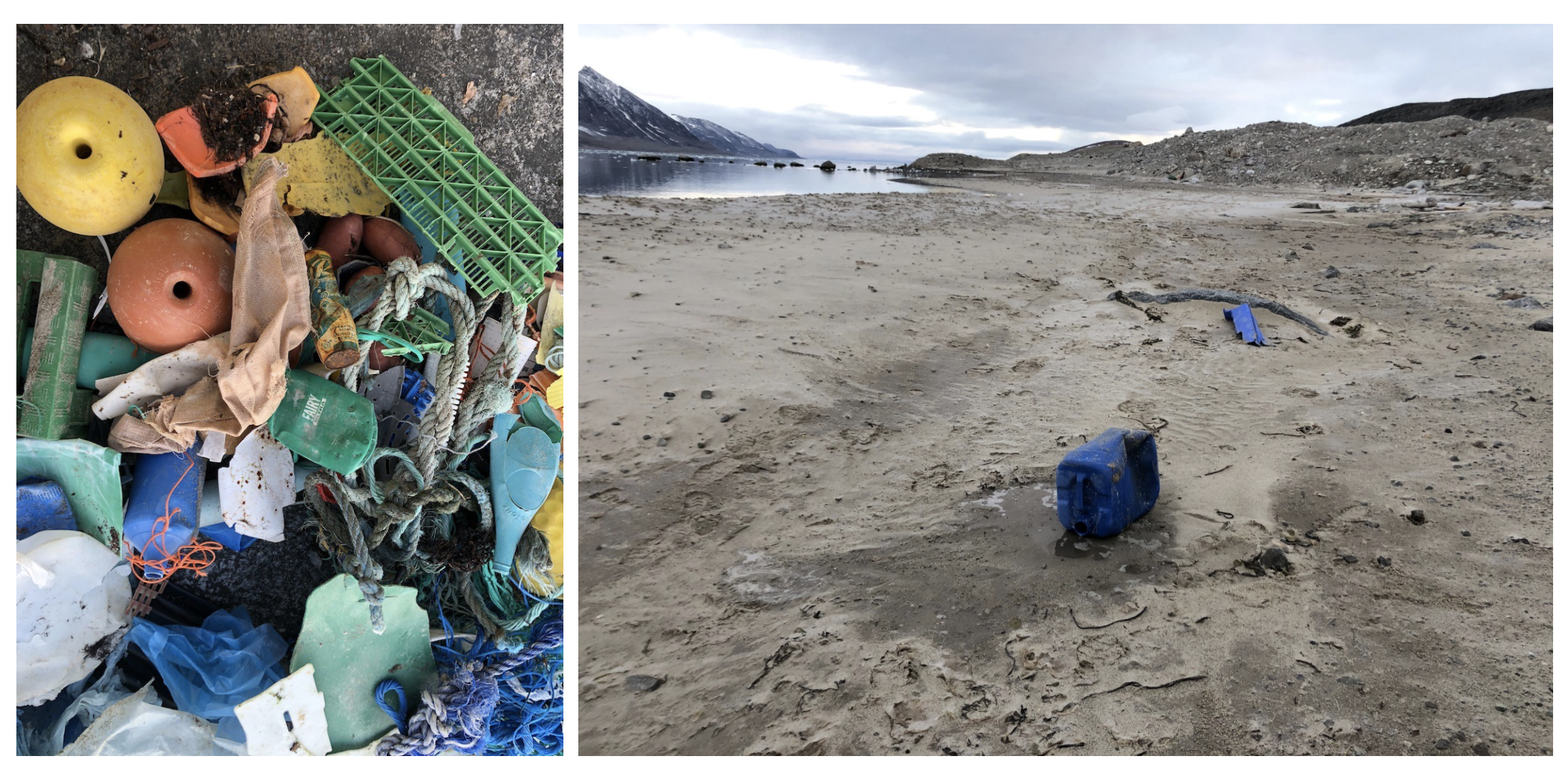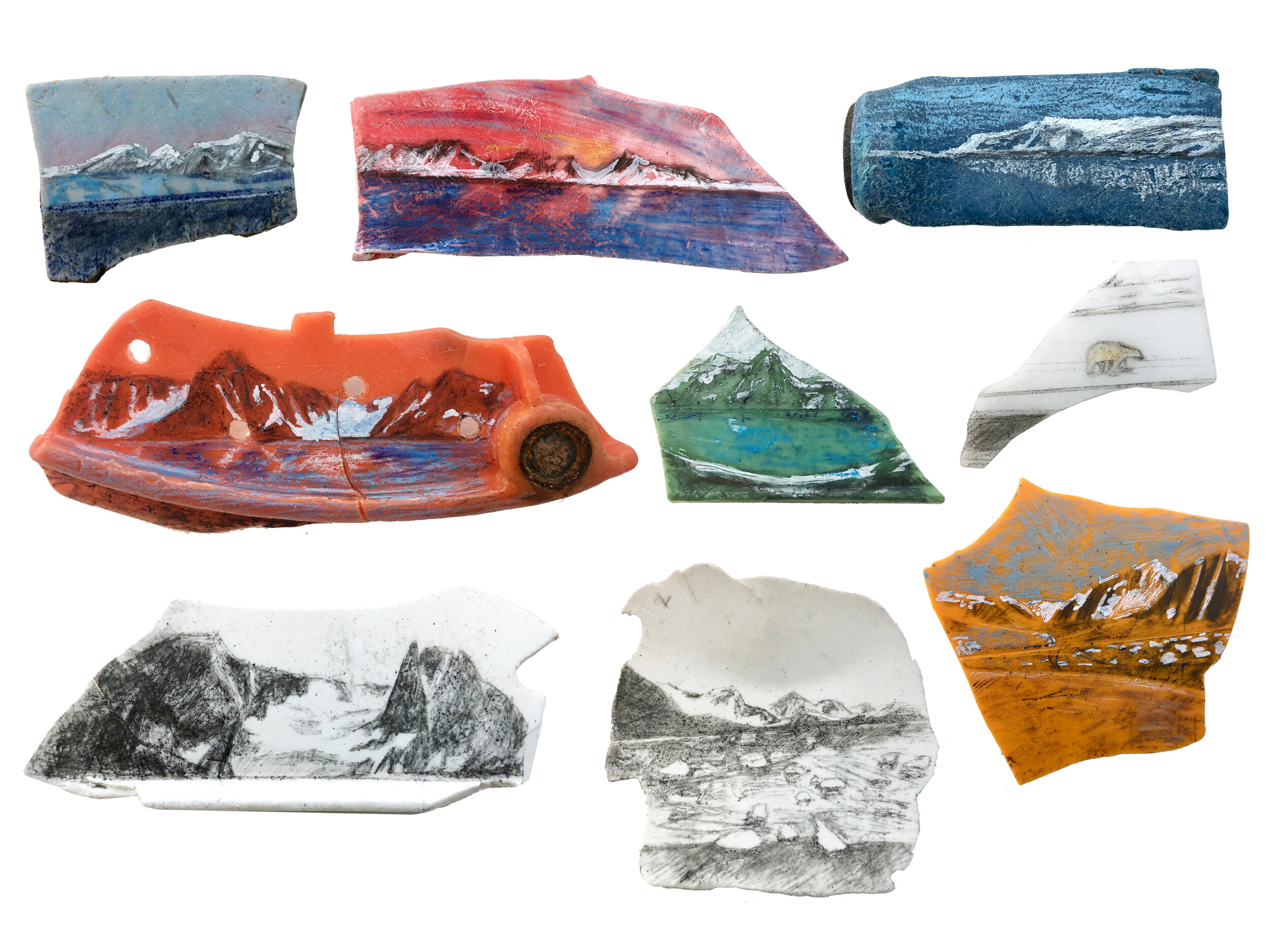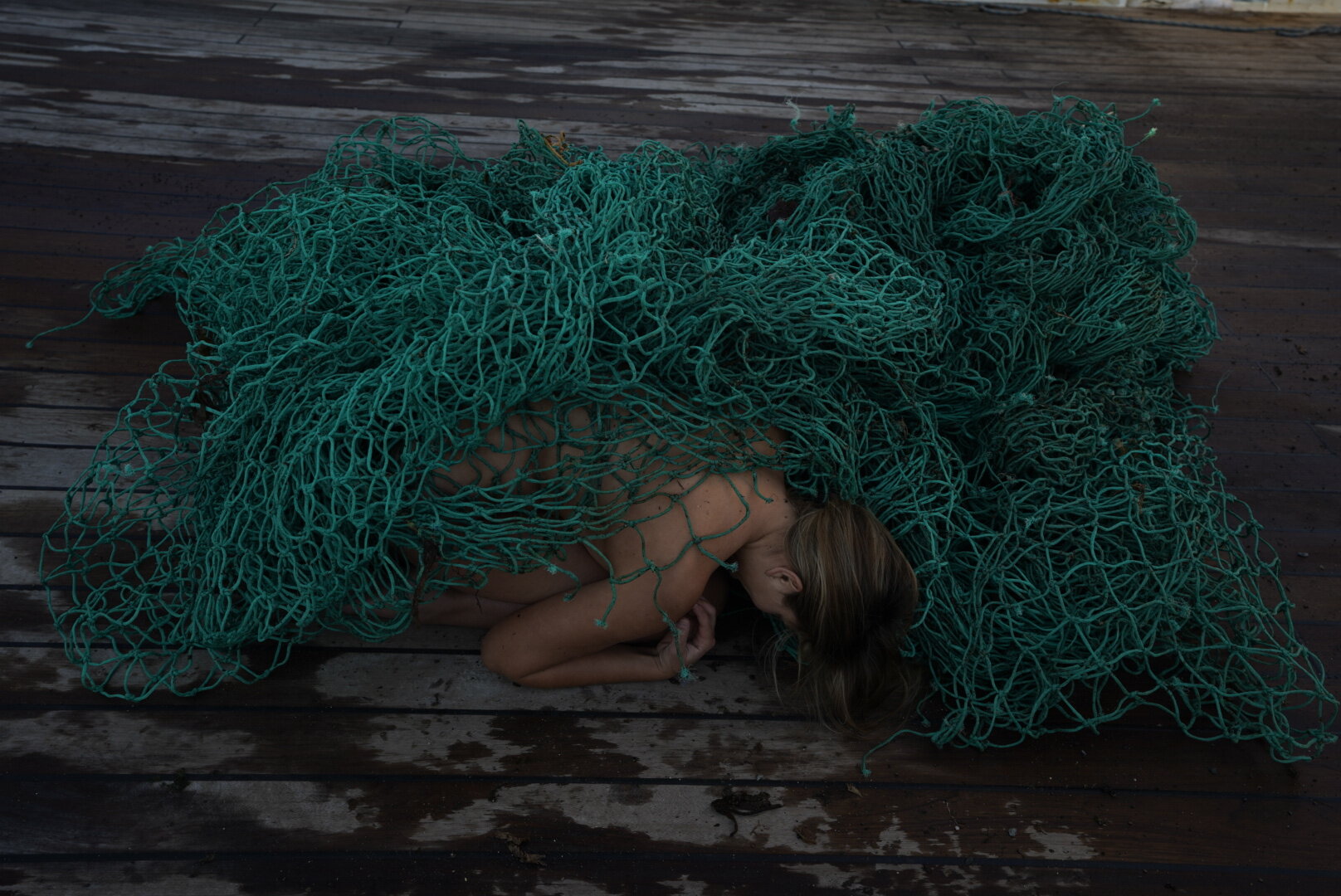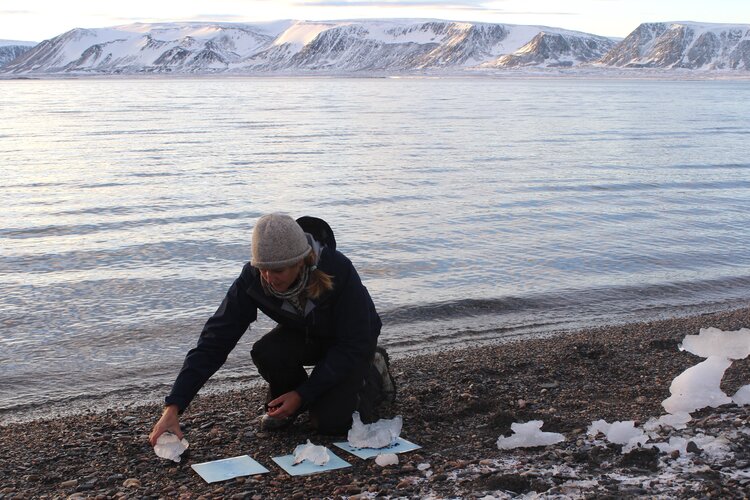Svalbard, Norway (ARTIST RESIDENCY, 2.5 WEEKS)
As we sail the perimeter of Svalbard, into the northernmost part of Earth, I can’t help but think — we (humans) are strangers here. Up here, this wild place survives and thrives absent of human progress and interaction. It feels like we’ve entered a special time-capsule, preserving pristine nature and honoring the quiet.
I feel like an outsider looking in at a place that exists beyond me. Especially, when we come in contact with wildlife. These interactions — animal to human — become stare-off’s, as we study each other like alien life forms. On both sides, we are witnessing each other for the first time, evaluating our motives and observing the unfamiliar.

These arctic inhabitants have no knowledge of the outside, human-dominated world. Here, there are no planes flying overhead, no other ships in sight, no cars, no honking, no wifi! It feels like moving back in time, preceding the Anthropocene. Rather, this seems like a history where everything lives in cyclical harmony with the land, sea, seasons, and resources. This is a place preserved and untouched by the chaos of the modern age.

“Like the canary in the coal mine, the climate changes already evident in the Arctic are a call to action.”
— Susan Collins
As we roam the arctic terrain and seas, I feel alienated by the wildlife — in a good way! The bursting breaths of a pod of beluga whales swimming past me made me freeze in my place. Watching polar bears retrace my steps, sniffing for me was a haunting but exciting connection. Observing walruses on ice chunks and making art by curious harbor seals was beyond thrilling. Each day these incredible animals interact with each other and their environment in such an integrated way, I feel separate from it. In fact, I long to feel a part of their world, but know this is not my place.

Sadly, my moment of engaging with the familiar was stumbling across rainbow scattered plastic shards that littered the shoreline and glacial moraine — now, that looks familiar! Plastic debris and discarded nets found in the arctic put me back in touch with my own humanness. Once noticed, I realized proof of human presence stashed in the kelp, entangled in the rocks, frozen in the ice, and washed on the shore. The amount of discarded plastics found and collected was heartbreaking. And worse, this waste kills wildlife and poisons our waters.
Here, more than anywhere else I’ve traveled — it became instantly clear that our wasteful habits transcend us, replacing even the most isolated places. This inspired a series of dozens of miniature landscape drawings directly on the shards of plastics found entitled “Left Behind.” It makes me think about the artifacts and items that remain when ice is gone and wildlife disappears. Our human effects don’t disappear, but rather replace these natural wonders.

Fellow residency participants and I also collect over 400lbs of discarded fishing nets, buoys, and ropes. I can’t even imagine what it must be like to get caught in these ropes. What surprised me most is the sheer weight of them all. I followed my impulse to understand what it’s like to get entangled and vulnerable, like so much wildlife. These heavy ropes were placed on top of me in freezing cold to understand the weight of our waste.
This push-and-pull of being a part of the natural world and feeling so separate from it, is something to explore in an entirely new body of work about the Arctic Circle region. Topics to explore include coal mining and extraction, plastic pollution, and effects of Co2 emissions that contribute to the ice melt.
This includes “Ice Clearing” video works where I physically clear ice from landscapes to show how human activity directly correlates to ice depletion. This also includes a series of cyanotypes, recording the silhouettes of glacial ice chunks before they disappear. Findings and source material from this voyage will effect all works to be made moving forward. All found and discarded materials are properly removed and will re-emerge in new works of art. Coming soon!

